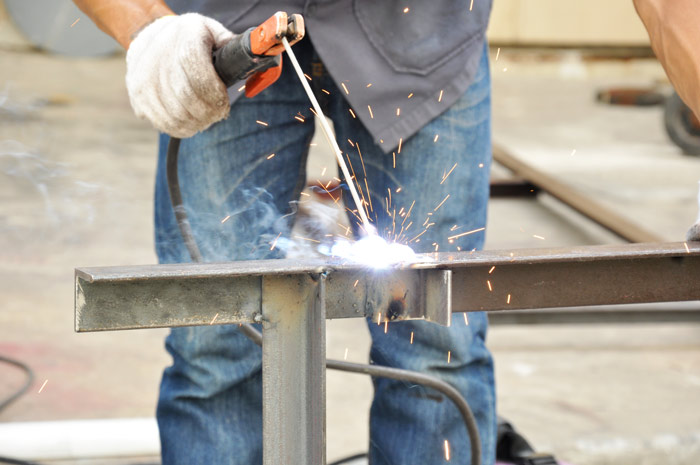The Black Ink Team's Guide To Arc Welding
by Black Ink Team

There are many different types of welding (resistance welding, oxyacetylene welding, solid state welding, electron beam welding, stud welding, etc.). Though the methods themselves vary, the goal remains the same: to join two separate bits of metal. One of the most popular types of welding is arc welding. 'Arc' in the name refers to electricity flowing across a gap and in doing so completing a circuit. The way it works is that the workpieces a welder using arc welding is working on are placed near the arc, and the heat that it generates joins them together.
Just as there are many types of welding in general, there are many types of just arc welding. The differences between them include the type of electrical current that gets used, the type of electrode that gets used, the properties of the power supply that gets used, and the utilization or omittance of a shielding gas.
Some metals corrode (under certain circumstances) when they come in contact with air and/or water, and during arc welding the beading and/or joints can become brittle and therefore unsafe as a result. Heat exacerbates this problem exponentially. To prevent arc welding corrosion problems (such as hydrogen embrittlement, galvanic corrosion, and knifeline attack) from occurring welders use a shielding gas. Shielding gases are inert gases (such as helium and argon) that get pumped around the working environment to protect the juncture that is being made.
Arc welding setups can rely on either direct current (DC) or alternating current (AC). DC current flows in one direction, whereas with AC the direction that the electrons flow in changes back-and-forth periodically. The two types of current also differ in polarity (whether they are negatively or positively charged). DC can either be positive (DC+) or negative (DC-); contrarily with AC the polarity changes with the direction of flow. DC+ is more powerful for arc welding purposes, but DC- is occasionally used for jobs involving thinner objects. One problem with using AC while arc welding is that the voltage drops significantly whenever the direction/polarity reverses, but this can be fixed by deploying a special type of power supply which generates electricity in a square wave instead of a sine one. In arc welding terms, this means the arc length is kept consistent.
Voltage is a measure of the amount of electricity flowing through a circuit; current, on the other hand, is the rate at which the electricity is flowing. In arc welding, adding more voltage translates to making the arc longer and increasing the current creates a greater amount of heat. Depending on the job at hand, a different arc welding power supply must be used. Some arc welding units provide electricity at a constant rate and in variable voltage (constant current). These are better suited for manual welding, as even for experienced arc welders it is difficult to keep the electrode at a steady distance from the workpieces. The other kind of arc welding power supply unit is the obverse - it provides electricity in a constant amount and lets you vary the rate (constant voltage). This variety is more well-suited for automatic welding, since machines have an easier time keeping the electrode stable.
An electrode in arc welding is a thin metal rod which gets used as one of the endpoints of the arc. The other endpoint can be one of the workpieces (in the case of AC being used) or a thick piece of metal that is grounded (in the case of DC being used). There are two main types of arc welding electrodes: consumable and non-consumable. Consumable electrodes melt under the heat and stress of arc welding, and become the molten substance that later cools and unites the workpieces. Non-consumable electrodes do not melt; instead, they facilitate the production of an arc that melts a separate material, which is the filler material that forms the desired union. Tungsten is the most common metal used for making non-consumable electrodes. Covering some consumable electrodes, there is a substance called flux which degrades after being exposed to heat and produces a shielding gas on its own.
It is dangerous to utilize arc welding; that is why much safety gear designed for the process exists. As a baseline precaution, operators should wear thick clothing to insulate them from sparks and heat. Arc welding produces a massive amount of ultraviolet light which can burn your retinas - it is therefore recommended that you wear a mask that has a dark face plate to prevent that from happening. Some masks have face plates that automatically darken in response to bright light, so that you can see normally while there's no arc welding going on. Finally, in addition to any shielding gases being used arc welding produces gases and particulates which can be dangerous to inhale, so a respirator is also advisable.
